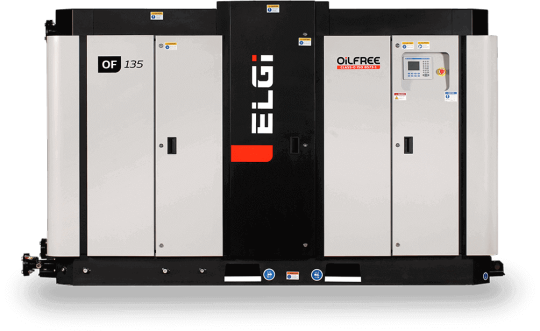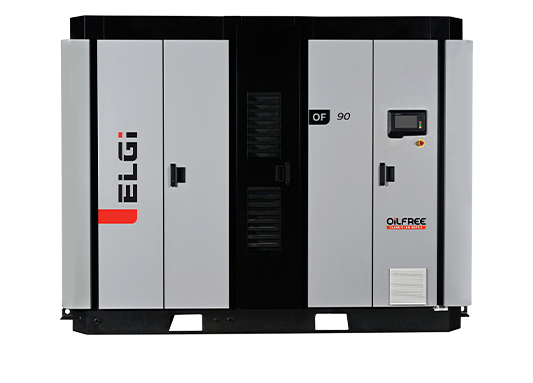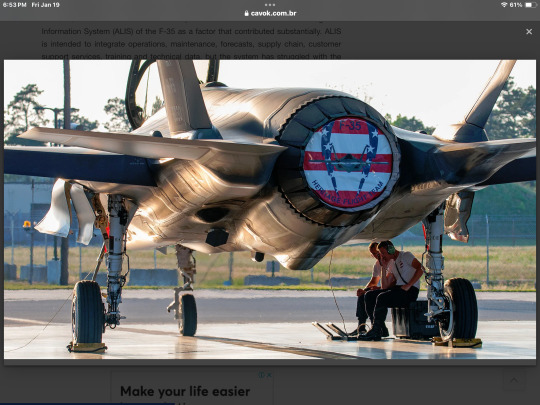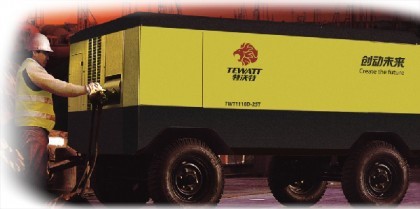#Two Stage Air Compressor
Explore tagged Tumblr posts
Text
Investing in a two-stage air compressor is a game-changer for industrial applications. These compressors deliver superior efficiency, higher pressure output, and longer operational life. Ideal for heavy-duty tasks, they reduce energy consumption and minimize wear and tear. Whether powering pneumatic tools or supporting manufacturing processes, a two-stage air compressor ensures reliability and cost-effectiveness for any industrial setup.
0 notes
Text
#air compressor thailand#oil lubricated air compressor#oil free screw air compressor#industrial air compressor thailand#two stage air compressor
0 notes
Text

Two Stage Air Compressor | Ranging from 60-500 HP | ELGi USA
Elgi Compressors USA, providing energy saving two stage air compressors with emerging technology that conserves natural resources & environment from pollution.
#two stage air compressor#industrial air compressors#portable air compressors#185 cfm air compressor#oil free air compressor#screw air compressor#oil free screw compressor#rotary screw air compressor#portable gas air compressor#oil lubricated air compressor
0 notes
Text

Installed a sensor on my girl so i know when
#Funy jokey#I've become addicted to cheap zigbee switches and sensors#I set this up so the air conditioner in our bedroom will stop running when the bucket is almost full theres something wrong with me#It works too and i love it :')#Next up is a small switched pump that will pump the water out for a set amount of time#Directly to the balcony plants#Our windowsill is too high up to run the condensed water out with gravity sadly so some kind of reservoir with sensor and pump has to do#Also planning a dedicated channel for outside air directly to the compressor with some kind of blowback valve#I hate mobile acs for how they are designed but there are no good high capacity mobile acs on the market yet#This should mitigate most of the issues though#The main issue is the lack of separation of compression and expansion stages which is why you should use outside air for the former#AND i have an hourly energy price contract which means i should switch the ac on/of on a set of preset conditions#I love tinkering and this is both pretty cheap and actually rewarding us with much better sleep during heat waves & less fuss#Also electricity savings#I put a bunch of stuff on this kind of sensing/logic already and its so nice to see your expenses go down with little to no impact#I feel like such a dad even though i dont have any kids#All of this is completely local and relatively cheap to set up but you have to like tinkering a little#Hmu if you want some advice i can point you away from large cloud based nonsense & help with initial startup#The two investments are a raspberry pi and a zigbee dongle#Possibly also a p1 reader or similar if you want data directly from your utilities#And after that most investments should be 10 dollars max per sensor or switch and most of the ali ones will work#And even have fancy features like somewhat accurately displaying power usage and current#Sorry for extremely rambly long tags i just get excited sometimes
2 notes
·
View notes
Text

Oil free air compressors draw in the outside air through the unloader valve, controlled by the control system.Oil-free screw air compressors work by drawing in outside air through the unloader valve, which is controlled by the control system. When the valve is open, the compressor pumps air and is active.
0 notes
Text
#air comressor#oil free comressor#oil lubricated compressor#air compressor#elgi air compressor#two stage piston compressor#oil free piston comressor#piston air compressors
0 notes
Text
#ELGi LD series two-stage direct drive reciprocating air compressors#Direct drive reciprocating air compressors#air compressors
1 note
·
View note
Text
Our Two Stage Screw Compressors consistently produce oil-free air that satisfies ISO8573-1 class 0 oil requirements in Indonesia. Where air meets metal surfaces inside the compressor, food grade coating is applied to ensure constant, oil-free air devoid of metal particles. Along with enhanced rotor clearances, pipes feature a unique e-coating that dependably delivers clean, oil-free air.
#oil free compressor indonesia#two stage screw air compressor#two stage oil free screw air compressors
0 notes
Text

The F-35's engine produces 43,000 lbs of thrust and consists of a three-stage fan, a six-stage compressor, an annular combustor, a single-stage high-pressure turbine, and a two-stage low-pressure turbine.
Pratt & Whitney, which makes the F135 engines that power all three version of the F-35, said in a separate statement Tuesday it expects to finish the preliminary design of its Engine Core Upgrade for the F-35 Joint Strike Fighter in December
The Lockheed Martin F-35 Lightning II is an American family of single-seat, single-engine, all-weather stealth multirole combat aircraft designed for air superiority and strike missions; it also has electronic warfare and intelligence, surveillance, and reconnaissance capabilities
119 notes
·
View notes
Text

Stray flashlight sucked by F-35 engine caused $4 million in damage
Fernando Valduga By Fernando Valduga 01/19/2024 - 20:18in Incidents, Military
The F-35's ALIS system should soon be replaced by a new cloud-based platform.
A portable flashlight left inside the engine inlet of a USAF F-35 fighter was sucked into the engine during a maintenance operation at Luke Air Base, Arizona, in March 2023, causing almost $4 million in damage, according to a new accident investigation report.
The investigation, released on January 18, blamed the maintainer for not following the joint and U.S. Air Force guidelines as the main cause of the accident, which damaged the $14 million engine enough so that it could not be repaired locally.
However, the researchers also cited problems with the Autonomous Logistics Information System (ALIS) of the F-35 as a factor that contributed substantially. ALIS is intended to integrate operations, maintenance, forecasts, supply chain, customer support services, training and technical data, but the system has struggled with the lack of real-time connectivity, clumsy interfaces and much more.
As a result, the report states, “the substantial number of checklists and the difficulty in accessing the corrections cause complacency when users consult the necessary maintenance procedures”.

The accident in question occurred on March 15, when a three-person maintenance team was completing a Time Compliance Technical Directive on the F-35 to “install a measurement buffer on the engine fuel line and perform a leak check on the new measurement buffer while the engine was running,” according to the report.
After the plug was installed, a maintainer conducted a tool inventory check, before another maintainer performed a "Before maintenance operations" inspection of the engine. For this, the maintainer used a flashlight to inspect the engine inlet and left it on the edge of the entrance.
The maintainer who performed the engine inspection then operated the engine for five minutes to check for fuel leaks. During this time, the cabin showed no indication of damage from foreign objects to the engine, but when the engine was turned off, the team reported hearing abnormal noises. The maintainer who conducted the engine operation performed another inspection and identified the damage, while the maintainer who completed the first check of the tool inventory performed another and noticed the lack of a flashlight.
Finally, the engine suffered damage to the second stage rotor, the third stage rotor, the fifth stage rotor, the sixth stage rotor, the fuel nozzle, the bypass duct, the high pressure compressor (HPC), the high pressure turbine (HPT) and the variable fan input vane, valued at US$ 3,933,106.

Investigators found that the maintainer who conducted the inspection before the engine ran did not follow the Joint Technical Data warnings to remove all loose items before entering the aircraft entrance and to ensure that all engine inlets and exhausts were free of foreign and loose objects. The aviator also did not follow the instructions of the Air Force Department to "perform a visual inventory" of the toolkit after completing each task.
Finally, the report also concluded that the local practice of the 62ª Aircraft Maintenance Unit did not fully follow the instructions of the DAF, which require the individual who signed the toolkit to perform visual checks of the inventory. Instead, the practice of the unit was to make the individual who performed the operation of the engine conduct the inventory check. As a result, the two aviators involved in the accident thought that the flashlight had been found.
The ALIS factor in the accident marks another problem for the problematic F-35 support venture. The program has been affected by high costs and technical problems, and lawmakers have expressed frustration with ALIS before. The Joint Office of the Program is in the process of moving to a new "Integrated Operational Data Network", but the authorities have described it as a gradual effort - it has already been under construction for four years.
Source: Air & Space Forces Magazine
Tags: ALISMilitary AviationF-35 Lightning IIIncidentsUSAF - United States Air Force / U.S. Air Force
Sharing
tweet
Fernando Valduga
Fernando Valduga
Aviation photographer and pilot since 1992, he has participated in several events and air operations, such as Cruzex, AirVenture, Dayton Airshow and FIDAE. He has works published in specialized aviation magazines in Brazil and abroad. He uses Canon equipment during his photographic work in the world of aviation.
Related news
MILITARY
France will deliver missiles to Ukraine on a monthly basis in 2024
19/01/2024 - 16:00
MILITARY
DragonFire laser weapon system successfully tested against aerial targets
19/01/2024 - 14:00
MILITARY
'Storted' camouflage is patented by the UAC for Su-75 Checkmate
19/01/2024 - 09:00
BRAZILIAN AIR FORCE
Saab puts F-39 Gripen in air combat with F-5 for IRST tests
19/01/2024 - 08:14
MILITARY
Houthis want to threaten the US with a single jet fighter, an old F-5
18/01/2024 - 22:52
MILITARY
USAF confirms that B-21 Raider started test flights at Edwards Air Base
18/01/2024 - 21:52
13 notes
·
View notes
Text
Two-stage air compressors are essential in industries requiring powerful, continuous airflow for efficient operations. In manufacturing, automotive, food and beverage, pharmaceuticals, and construction, these compressors deliver consistent, high-pressure air to power tools, streamline production, and enhance precision. Discover how each of these five industries benefits from the reliability and energy efficiency of two-stage air compressors.
0 notes
Text
0 notes
Text
0 notes
Text
From Ground-up to the Skies ELGI Compressed Air System
Case Studies | ELGi

In aerospace manufacturing, tiny details matter most. For instance, if proper torque is not applied to the screws and bolts fastening an aircraft fuselage, catastrophic failures can result. Compressed air is used to power the tools needed to apply that torque, making the compressed air system a critical part of the facility, though it largely stays behind the scene.
“Compressed air is our lifeline. Everything here runs on air,” explained Curtis Wood, facilities team supervisor at HAECO Americas (HAECO). “The pneumatic tools, the rivet guns — all of those things are run by compressed air. We need high-volume, quick, very clean air, and we need it to be very stable.”
HAECO Americas Airframe Services provides aircraft maintenance, repair and overhaul (MRO) services to major commercial and military clients. On any given day, one of the multiple hangars at the Greensboro, North Carolina, facility might harbour an aircraft from large commercial airlines, private operators, or the U.S. government. The Greensboro complex is nearly 1,000,000 square feet, with each hangar sprawling over 2 acres under roof.
The rigors and demands of the applications, in conjunction with the sheer scale of the facility, make the compressed air system at HAECO’s Greensboro facility a challenge just to maintain — let alone improve upon. However, Curtis Wood and his team at HAECO managed to do just that, with the help of Patton’s, Inc., a compressed air equipment supplier, and ELGi USA. In an on-going modernization project, the team of engineers has gradually improved reliability of the system and its energy efficiency — all the while adding sophisticated control and data-logging capabilities.
Compressed air is used to power nearly every application. “When you walk around in this place, you hear [compressed] air everywhere,” Wood explained. “It’s all around you.” And, since the mechanics work in confined spaces, the compressed air needs to be treated for contaminants, such as water vapor and oil, making the supply of clean and reliable compressed air paramount for HAECO.
Each of HAECO’s hangars has its own compressed air system, which are under the process of modernization. Ultimately, the final systems will include two ELGi air compressors, an air dryer, a mist eliminator, a storage tank, and a flow controller. While each hangar is unique and demands fluctuate consistently, target pressures remain around 90 psi (8.27 bar), and compressed air flow requirements do not exceed 350 cfm for any hangar.

Impact of Aerospace Applications on System Dynamics
Compressed air demand fluctuates dramatically at HAECO’s Greensboro plant, largely due to the nature of applications that are unique to aerospace maintenance. For instance, what Wood describes as “blowing down the fuel tank” is a venting procedure that requires about 125 cfm for extended periods of time. When aircraft first arrive at HAECO, their fuel tanks need to be inspected, requiring mechanics to go inside the tank. However, fumes from the tank are toxic and filled with volatile organic compounds (VOCs). To vent the jet fuel fumes out of the tank, compressed air is used to create a Venturi effect that evacuates the tank. Operators use a one-inch air hose to draw off the fumes. The process causes large spikes in compressed air demand for days at a time, and it may occur in multiple hangars simultaneously.
Unique workflows also impact the system dynamics of the compressed air system at HAECO. Air travel increases tremendously around the holidays, making for a temporary lull in work at HAECO. Demand comes surging back immediately afterwards as airplane manufacturers look to get routine maintenance completed during less busy times of the year.
“During the holidays, if you have a plane — it better be in the air,” Wood said. “So we’re really slow the week before Christmas. We run a real low cfm. But the day after Christmas, our cfm will skyrocket when those planes start cycling back in here. We’ll peak out at around January 5, and we’ll be near maximum capacity going forward.”
Workflow also differs hangar to hangar. Although seemingly contradictory, some large aircraft require less compressed air, as the work can move more slowly. Hangars handling other aircraft, such as narrow-body jets, will have much higher compressed air demands over prolonged periods of time.

Configuration of the Original Compressed Air System
Under consultation with ELGi, the engineers at HAECO have wisely implemented adequate storage and 50-hp variable frequency drive (VFD) air compressors from ELGi to handle the highly fluctuating demand in each hangar. Prior to that, however, the system was quite different.
“Everything here was 75-hp air compressors, and they were set up as load/unload. Then you ran through a dryer, and you had very little storage,” Wood said of the original compressed air system. “Basically, it was a run-all-the-time system. After we studied it with ELGi, we learned a lot about compressed air. We determined that 75 hp was way too much.”
In total, the Greensboro facility had eleven 75-hp air compressors running in load/unload mode. Whenever compressed air demand spiked — due to the fuel venting application or increased workflow — compressors would kick in, and continue running inefficiently for prolonged periods of time.
“One compressor would take the load, and when there was a small spike in demand, another one would kick in but carry very little load, nearly running unloaded,” Wood explained. “And these things would run unloaded for days. They didn’t have VFDs on them, so they weren’t running at brake horsepower proportional to the load. That meant that it’s the same whether it’s running at full load or idling.”
Leveraging Compressed Air Storage to Handle Demand Spikes
With ELGi’s help, HAECO redesigned the system to make better use of compressed air storage, helping each hangar respond to compressed air demand spikes better. Each hangar is a little different in system configuration, but the premise, or the mode of operation, remains the same.
“We’ve basically doubled the number of receivers to handle that [fluctuation] in the system, and then we put flow controllers in there,” Wood explained. “We let the air compressors work to 125 psi (8.6 bar), and then we use a flow controller to modulate the pressure. Each hangar is a little different, but at our most remote point we deliver 90 psi (6.2 bar). Some hangars need 102 psi (8.27 bar) to get 90 psi at the remote end — it just depends on the setup. Then we monitor the cfm that is used, not what is created.”
As Wood explained, each hangar’s compressed air system is a little different: Hangar 1 has about 1900 gallons (254 cubic feet) of storage; Hangar 2 has 1300 gallons (173.7 cubic feet); and Hangar 3 will ultimately have 2000 gallons (267.3 cubic feet) of storage. The goal, according to Wood, is to have 1800 to 2000 gallons of storage in each hangar.
The major difference between each hangar was ceiling height. Hangar 4, for instance, only had enough headroom to install 400-gallon (53.4 cubic feet) receivers. Where Hangars 1, 2 and 3 used dry tanks, Hangar 4 required a wet tank with zero-loss drains. The team at ELGi was helpful in designing that system in particular.
“ELGi actually helped design the system in Hangar 4 because it was very tight,” Wood said. “They were able to help us out with totally different setups and systems. Even though it’s the same concept and design, there are differences in the way we’re delivering compressed air in each building.”
Enhanced Energy Efficiency with ELGi Air Compressors
In conjunction with installing appropriate storage capacity, HAECO is also in the process of replacing each pair of 75-hp air compressors with two 50-hp ELGi air compressors.
“We didn’t need these bigger air compressors, so we were able to downsize to a 50-hp machine,” Wood said. “We found it best to install a 50-hp fixed-speed air compressor, and then put a 50-hp VFD with it. We let the VFD handle the low load, and let the fixed-speed machine do the high load. And probably 25 percent of the time we are running both.”
ELGi at Haeco
In conjunction with installing appropriate storage capacity, HAECO is also in the process of replacing each pair of 75-hp air compressors with two 50-hp ELGi air compressors.
With these changes the electrical load of the plant has dropped substantially. To date, HAECO has retrofitted the compressed air system of two hangars, effectively eliminating 100 hp. Additionally, with proper storage and VFDs, the compressed air system runs much more efficiently: Inclusively, the new VFD machines cost a maximum of $29.39 per hour at full load, and can throttle down to run at $5.87 per hour. In contrast, the original system’s 75-hp air compressors required about $48.00 per hour.
“Basically, by trading two [Brand Xs] for two 50-hp ELGi air compressors, it saved us about $128,000 per year — on the low end,” Wood explained. “That’s easy for our corporate controllers to understand. I can pay for two of these air compressors in the first year.”
Handling Compressor Data
Every hangar has its own Building Management System (BMS), and the new compressed air systems are each tied to their respective BMS. Integrating the new installations into the BMS had its own suite of challenges, but the capabilities to monitor and dictate air compressor performance is quite valuable. One particular challenge was writing the code to convert the air compressor standard values to the metric system used by the BMS.
“That was one of the biggest challenges — converting the data,” Wood said of the air compressor integration. “What that compressor actually shoots out is this huge fraction. We wanted it to read in a standard format. Our programmers went in there, took the data coming out of the ELGi compressor, and learned how to convert it by working with the programmers at ELGi. They helped convert it to data we could use.”
Once the BMS receives and converts the air compressor data, it stores the information at several locations. The metrics are stored on the controller for a week before being sent to the server, where they are stored indefinitely. The record keeping is yielding major operational benefits for HAECO.
“We’re storing that data indefinitely so we can see how things change,” Wood explained. “As we change aircraft, layouts or configurations, we put notes in there. From a business pricing aspect, this is helping us understand what the demand is. Larger aircraft actually require less [compressed air]. The smaller, older airplanes require the most.”
Education from ELGi
Designing an efficient and reliable compressed air system suited for a specific facility is a long and challenging process. Compound that effort with multiple hangars supporting different work requirements, and the process becomes even more difficult. Despite the daunting task, ELGi USA has successfully collaborated with HAECO Americas to dramatically improve the compressed air system at the Greensboro plant.
“The ELGi team helped us overcome some setup issues,” Wood commented. “They were actually able to educate us. We went down to Charlotte, and they broke one of these machines down for us. We learned how to take one of these apart. We knew we were going to do our own service, so we needed to know the same thing the service guys would know — very specific details about how to take these things apart.”
The HAECO plant was one of ELGi’s first customers. The partnership has proved valuable to HAECO from an educational standpoint, and the facilities team is quite pleased with the equipment.
“We’re slowly but surely switching them all to ELGi air compressors,” Wood said. “We like ELGi air compressors because they’re easy to work on. Inside, they’re made in a way that it is easy to maintain. It’s all stainless steel or aluminium. The thing’s going to last a long time, and it can take a lot of abuse.”
HAECO Americas has allotted budgetary resources for more air compressor upgrades in the coming year. Through a partnership with ELGi USA, the compressed air system at the Greensboro plant will continue its modernization process, improving the energy efficiency and putting insightful performance trends on record.
More info :
#industrial air compressors#two stage air compressor#portable gas air compressor#185 cfm air compressor#screw air compressor
0 notes
Text
Application Of Tewatt Mobile Air Compressors In Water Wells And Geothermal Projects
Tewatt mobile air compressors, equipped with the world's leading heavy-duty VOLVO diesel engine, international top-tier dedicated electric motors for compressors, exceptional American Tewatt screw compressor host, an oversized military-grade radiator, a stable and straightforward control system, and a heavy-duty filtration system among other premium components. These specifications make Tewatt's mobile air compressors apt for the harsh conditions encountered in water wells and geothermal projects, making them extensively used in such constructions.

Requirements and Characteristics of Water Wells and Geothermal Projects:
The industry usually employs diesel mobile compressors for water wells and geothermal projects, demanding high exhaust volume, high pressure, and frequent mobility. Depending on the project, the requirements for compressors differ between water and geothermal wells. Since geothermal wells generally have a much deeper drilling depth than water wells, they often adopt multiple parallel machines.
Working conditions: Construction is more common in the colder northern parts of China, with some areas being at a higher altitude.
The typical compressor exhaust volume ranges from 21m3/min to 35m3/min, and the exhaust pressure is between 18kg/cm2 and 35kg/cm2. The drilling diameter ranges from 100mm-400mm.
Air drilling efficiency is significantly higher than the traditional water drilling method and is the inevitable trend for the drilling industry's future development.

Solutions:
Addressing the water well and geothermal industry's needs, our company has specifically developed a high-pressure compressor with an exhaust pressure of 25kg/cm2 and an exhaust volume of 31.5m3/min. With our drilling equipment, we can easily penetrate a 300mm diameter and 200m deep granite geological structure. If two 25kg/cm2, 30m3/min compressors are paired with a 100kg/cm2 booster, we can achieve up to 2800m for geothermal projects, marking a pioneering achievement with our partners.
Given the frequent mobility required by water wells and geothermal projects, we've designed a vehicular high-pressure compressor for easy relocation, eliminating the need for separate power drives, lifting, or transportation, saving users significant time and cost. It's exceptionally convenient for operations within a 100km range.
Our large exhaust volume, dual-stage high-pressure screw compressor, meets the needs of users requiring even higher pressures.
In terms of drilling and geothermal projects, our products have gained widespread recognition in places like Xinjiang, Shandong, Northeast, Henan, and Yunnan. Notably, in Yunnan's Qujing voluntary drought-resistance project, we completed our mission successfully, receiving attention from local television stations and government interviews.
We can provide all drilling clients with a set of efficient, advanced solutions and equipment plans based on their requirements. We also offer a comprehensive cost and maintenance plan for the entire equipment set, addressing professional air drilling issues.

Tewatt mobile air compressors boast reliability, stability, energy efficiency, and environmental friendliness. They are also resilient to extreme conditions, such as high temperatures, severe cold, high dust, and high altitudes, maintaining exemplary performance in harsh environments. The intelligent control system further ensures equipment stability and simplifies operations. Tewatt compressors undoubtedly have a promising application future in water wells and geothermal projects.
2 notes
·
View notes